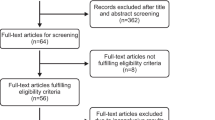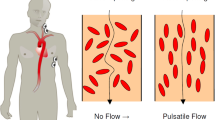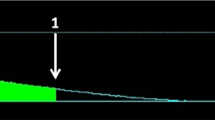Abstract
Objectives: Assessment of and effect of training on reliability of esophageal Doppler (ED) versus thermodilution (TD) for cardiac output (CO) measurement.
Design: Prospective study.
Setting: Intensive care unit of a university hospital.
Patients: 64 consecutive critically ill patients requiring a pulmonary artery catheter, sedation, and mechanical ventilation.
Interventions: Esophageal Doppler CO measurements were performed by the same operator, whereas TD CO measurements were carried out by other independent operators. A training period involving the first 12 patients made the operator self-confident. In the remaining patients, the reliability of ED was assessed (evaluation period), using correlation coefficients and the Bland and Altman diagram. Between training and evaluation periods, correlation coefficients, biases, and limits of agreement were compared.
Measurements and results: During training and evaluation periods, 107 and 320 CO measurements were performed in 11 out of 12 patients and in 49 out of 52 patients, respectively. Continuous CO monitoring was achieved in 6 out of 11 patients and in 38 out of 49 patients during training and evaluation periods, respectively. Between the two periods, correlation coefficients increased from 0.53 to 0.89 (p < 0.001), bias decreased from 1.2 to 0.1 l.min−1 (p < 0.001), and limits of agreement decreased from 3.2 to 2.2 l.min−1 (p < 0.001).
Conclusion: A period of training involving no more than 12 patients is probably required to ensure reliability of CO measurement by ED.
Similar content being viewed by others
References
American Society of Anesthesiologists Task Force on Pulmonary Artery Catheter (1993) Practice guidelines for pulmonary artery catheterization. Anesthesiology 78: 380–394
Forrester JS, Ganz W, Diamond G, MacHigh T, Chonette DW, Swan HJC (1972) Thermodilution cardiac output determination with a single flow directed catheter. Am Heart J 83: 306–311
Shah KB, Rao TLK, Laughlin S, El-Etr AA (1984) A review of pulmonary artery catheterization in 6,245 patients. Anesthesiology 61: 271–275
Iberti TJ, Fisher EP, Leibowitz AB, Panacek EA, Silverstein JH, Alberston TE and The Pulmonary Artery Catheter Group (1992) A multicenter study of physicians’ knowledge of the pulmonary artery catheter. JAMA 264: 2928–2932
Steingrub JS, Celoria G, Vickers-Lahti M, Teres O, Bria W (1991) Therapeutic impact of pulmonary artery catheterization in a medical/surgical ICU. Chest 99:1451–1455
Darmon PL, Hillel A, Mogtader A, Mindich D, Thys D (1994) Cardiac output by transesophageal echocardiography using continuous-wave Doppler across the aortic valve. Anesthesiology 80: 796–805
Gorcsan J (1995) Quantification of left ventricular function using transesophageal echocardiography. In: Vincent JL (ed) Yearbook of intensive care and emergency medicine. Springer, Brussels, pp 575–592
Cahalan MK, Foster E (1995) Training in transesophageal echocardiography: in the lab or on the job? Anesth Analg 81:217–218
Savage RM, Licina MG, Koch CG, Hearn CJ, Thomas JD, Starr NJ, Stewart WJ (1995) Educational program for intraoperative transesophageal echocardiography. Anesth Analg 81: 399–403
Hunstman LL, Stewart DK, Barnes SR, Franklin SB, Colocousis JS, Hessel EA (1983) Non invasive Doppler determination of cardiac output in man. Clinical validation. Circulation 67: 593–602
Singer M, Clarke J, Bennett D (1989) Continuous hemodynamic monitoring by esophageal Doppler. Crit Care Med 17: 447–452
Singer M (1993) Esophageal Doppler monitoring of aortic blood flow: beat-by-beat CO monitoring. Int Anesthesiol Clin 31: 99–125
Kristensen BD, Goldbert SJ (1987) Number of CO required to accurately determine mean velocity of blood flow in the ascending aorta and pulmonary trunk. Am J Cardiol 60: 746–747
Lamantia K, O’Connor T, Barash PG (1990) Comparing methods of measurement: an alternative approach. Anesthesiology 72: 781–783
Siegel LC, Pearl RG (1992) Noninvasive cardiac output measurement: troubled technologies and troubled studies. Anesth Analg 74: 790–792
Bland JM, Altman DG (1986) Statistical methods for assessing agreement between two methods of clinical measurement. Lancet I: 307–310
Mark JB, Steinbrook RA, Gugino LD, Maddi R, Hartwell B, Shemin R, Disesa V, Rida WN (1986) Continuous noninvasive monitoring of cardiac output with esophageal Doppler ultrasound during cardiac surgery. Anesth Analg 65:1013–1020
Freund PR (1987) Transesophageal Doppler scanning versus thermodilution during general anesthesia. An initial comparison of cardiac output techniques. Am J Surg 153: 490–494
Perrino AC, Fleming J, Lamantia KR (1990) Transesophageal Doppler ultrasonography: evidence for improved cardiac output monitoring. Anesth Analg 71: 651–657
Spahn DR, Schmid ER, Tornic M, Jenni R, von Segesser L, Turina M, Baetscher A (1990) Noninvasive versus invasive assessment of cardiac out put after cardiac surgery: clinical validation. J Cardiothorac Vase Anesth 4: 46–59
Perrino AC, Fleming J, Lamantia KR (1991) Transesophageal Doppler cardiac output monitoring: performance during aortic reconstructive surgery. Anesth Analg 73: 705–710
Schmid ER, Spahn DR, Tornic M (1993) Reliability of a new generation transesophageal Doppler device for cardiac output monitoring. Anesth Analg 77: 971–979
Lavandier B, Cathignol D, Muchada R, Bui Xuan B, Motin J (1985) Noninvasive aortic blood flow measurement using an intraesophageal probe. Ultrasound Med Biol 11: 451–460
Klotz KF, Klingsiek S, Singer M, Wenk H, Eleftheriadis S, Kuppe H, Schmucker P (1995) Continuous measurement of cardiac output during aortic cross-clamping by the esophageal Doppler monitor ODM 1. Br J Anaesth 74: 655–660
Nishikawa T, Dohi S (1993) Errors in the measurement of cardiac output by thermodilution. Can J Anaesth 40: 142–153
Renner LE, Morton MJ, Sakuma GY (1993) Indicator amount, temperature, and intrinsic cardiac output affect thermodilution cardiac output accuracy and reproducibility. Crit Care Med 21: 586–597
Lefrant JY, Bruelle P, Ripart J, Ibanez F, Aya G, Peray P, Saïssi G, de La Coussaye JE, Eledjam JJ (1995) Cardiac output measurement in critically ill patients: comparison of continuous and conventional thermodilution techniques. Can J Anaesth 42: 972–976
Stetz CW, Miller RG, Kelly GE, Raffin TA (1982) Reliability of the thermodilution method in the determination of cardiac output in clinical practice. Am J Respir Crit Care Med 126:1001–1004
Krishnamurthy B, McMurray TJ, McClean E (1997) The peri-operative use of the esophageal Doppler monitor in patients undergoing coronary artery revascularisation. Anaesthesia 52: 624–629
Smith MD, Cassidy MJ, Souther S, Morris EJ, Sapin PM, Johnson SB, Kearney PA (1995) Transesophageal echocardiography in the diagnosis of traumatic rupture of the aorta. N Engl J Med 332: 356–362
Daniel WG, Mügge A (1995) Transesophageal echocardiography. N Engl J Med 332: 1268–1279
Practice guidelines for perioperative transesophageal echocardiography (1996) A report by the American Society of Anesthesiologists and the Society of Cardiovascular Anesthesiologists task force on transesophageal echocardiography. Anesthesiology 84: 986–1006
Author information
Authors and Affiliations
Rights and permissions
About this article
Cite this article
Lefrant, J.Y., Bruelle, P., Aya, A.G.M. et al. Training is required to improve the reliability of esophageal doppler to measure cardiac output in critically ill patients. Intensive Care Med 24, 347–352 (1998). https://doi.org/10.1007/s001340050578
Received:
Accepted:
Issue Date:
DOI: https://doi.org/10.1007/s001340050578




